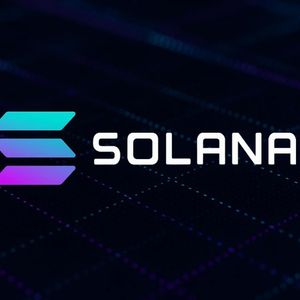Market Pulse
The promise of Web3 — a decentralized, user-owned internet — remains a compelling vision. Yet, for many, the reality often involves a labyrinth of disparate applications, complex wallet integrations, and a steep learning curve. This fragmentation acts as a significant barrier to mainstream adoption. However, pioneering technologies are actively working to bridge this gap, transforming how users interact with the decentralized web. Among these, WalletConnect stands out as a crucial infrastructure, providing the ‘last mile’ solution to unlock Web3’s true potential for a broader audience.
The Web3 Fragmentation Challenge
As of October 7, 2025, the current Web3 ecosystem, while innovative, often presents a fragmented and disjointed experience. Users frequently encounter challenges such as managing multiple browser extensions for different wallets, navigating incompatible dApps, or struggling with complicated seed phrase management. This complexity not only intimidates new entrants but also frustrates seasoned users, hindering the seamless flow of digital assets and interactions across various blockchain networks. Without a universal, user-friendly standard for connecting wallets to decentralized applications, the dream of a truly interoperable and accessible Web3 remains elusive.
WalletConnect’s Core Innovation
At its heart, WalletConnect is an open-source protocol designed to establish a secure, encrypted connection between decentralized applications (dApps) and mobile wallets. Instead of requiring users to download specific browser extensions or manually input sensitive information, WalletConnect leverages QR codes or deep links to initiate a secure bridge. This innovation allows any dApp (whether on a desktop browser or mobile device) to interact directly with a user’s preferred wallet, irrespective of the underlying blockchain or wallet provider. It’s a simple yet powerful mechanism that underpins much of today’s decentralized activity.
- Universal Compatibility: Supports hundreds of wallets and dApps across a multitude of blockchains.
- Enhanced Security: Eliminates the need for dApps to directly access private keys, as all transaction signing happens securely within the user’s wallet.
- Seamless User Experience: Simplifies connection processes to a scan or click, making Web3 significantly more approachable.
- Open Standard: Being open-source, it encourages widespread adoption and continuous community-driven improvement.
Empowering a Seamless User Experience
The impact of WalletConnect on user experience cannot be overstated. By abstracting away much of the underlying technical complexity, it enables a smoother, more intuitive interaction with decentralized applications. A user can, for instance, browse an NFT marketplace on a desktop, scan a QR code with their mobile wallet, and authorize a purchase without ever exposing their private keys to the desktop browser. The evolution from WalletConnect v1 to v2 has further enhanced this, introducing features like multi-chain session support, enabling users to interact with dApps on different blockchains within a single connection. This signifies a major leap towards true cross-chain functionality, moving beyond single-chain silos.
Beyond Simple Connection: Interoperability and Future
WalletConnect’s role extends beyond mere connection; it is a foundational component for achieving true Web3 interoperability. By standardizing the communication layer between wallets and dApps, it facilitates a more cohesive ecosystem where applications can interact with users more effectively. Upcoming features and integrations, such as push notifications directly to wallets for dApp updates or governance proposals, further solidify its position as a critical piece of Web3 infrastructure. Its ongoing development aims to support more complex interactions, enabling a richer, more integrated decentralized experience that mirrors the ease of use found in traditional internet applications, yet with all the benefits of decentralization and user ownership.
Conclusion
As the Web3 space continues to mature, the emphasis is increasingly shifting from speculative assets to practical utility and user experience. WalletConnect, by offering a robust, secure, and intuitive protocol for connecting users to the decentralized internet, is performing vital work in paving the ‘last mile’ towards mass adoption. Its ability to simplify complex interactions and foster interoperability across a diverse ecosystem makes it an indispensable tool for both developers and end-users, ultimately accelerating the journey towards a more accessible and user-friendly decentralized future.
Pros (Bullish Points)
- Lowers the barrier to entry for new Web3 users, encouraging broader participation.
- Enhances interoperability and connectivity across diverse dApps and blockchain networks.
Cons (Bearish Points)
- Relies on user vigilance against phishing scams targeting connection protocols, requiring ongoing user education.
- Potential for central points of failure or vulnerabilities if the underlying protocol is compromised, despite its open-source nature.



